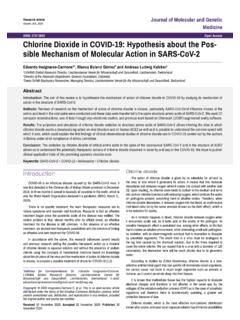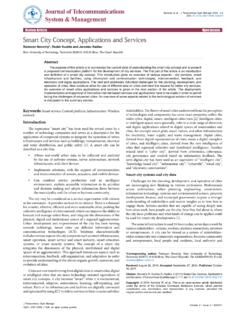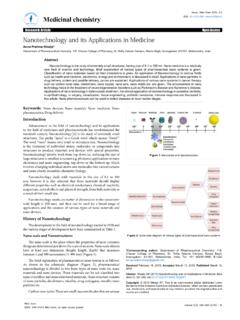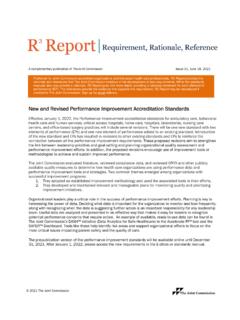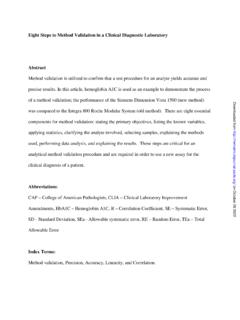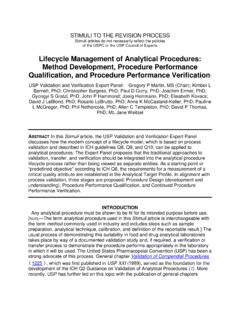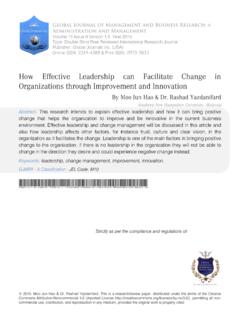Transcription of Strong vs. Weak Organizational Culture: Assessing the ...
1 Volume 7 Issue 1 1000287 Arabian J Bus Manag Review, an open access journalISSN: 2223-5833 Research Article Open AccessArabian Journal of Business and Management ReviewArabian Journal of Business and Management ReviewISSN: 2223-5833 Maseko, Arabian J Bus Manag Review 2017, 7:1 DOI: : < Strong >OrganizationalStrong > culture; Motivation; Organizationalperformance; Strong < Strong >OrganizationalStrong > culture; Weak < Strong >OrganizationalStrong > cultureIntroductionOrganizational culture and motivation have received an almost exhaustive attention in research studies. This is due to the general appreciation that these two variables do not only influence the individual employee s performance but the whole Organization s effectiveness, performance and sustenance. The interest in < Strong >OrganizationalStrong > culture stems from the belief that culture influences behaviour, decision-making, < Strong >OrganizationalStrong > strategies, and individual and < Strong >OrganizationalStrong > performance .
2 Non-motivated employees, generally portray a dissatisfied attitude at work, hence are less committed, and are most likely to quit the < Strong >OrganizationalStrong > . Even if opportunities to quit do not avail, they are likely to have a detached attitude or emotionally and psychologically withdraw from the < Strong >OrganizationalStrong > . It is for that reason, suggest that employee motivation is one of the characters to assess to determine the employee s intention to quit. The focus of this review will be to critically analyse the difference in weak and Strong < Strong >OrganizationalStrong > on keeping employees motivated [1-3].MethodsAn analytic review of literature published between 2011 and 2016 on employee motivation, < Strong >OrganizationalStrong > culture, and < Strong >OrganizationalStrong > performance was cultureIn the last two decades, there has been a great deal of insight-sharing and research concerning culture within Organizations, and its impact on various aspects of the < Strong >OrganizationalStrong > , motivation included.
3 The term culture is abstract and general and involves various aspects of an < Strong >OrganizationalStrong > . Albeit there is diversity in literature concerning < Strong >OrganizationalStrong > culture, they all have one consensus < Strong >OrganizationalStrong > culture has both tangible and non-tangible aspects [4]. < Strong >OrganizationalStrong > culture is the Organization s orientation towards its employees and customers, and includes written and verbal circulated rules that guide the employees behaviour added the aspect of stable beliefs, values and principles developed and shared within the Organization. On another note, in his definition includes goals and philosophies, visible structures and processes, and the assumptions that underlie the thoughts processes, feelings, beliefs, and perceptions of individuals within Organizations [4-6].
4 From this definition, < Strong >OrganizationalStrong > culture does not only involve employees, but even customers. In an < Strong >OrganizationalStrong > , the employees behaviour is not only guided by rules but over time values and beliefs develop and are internalised by the employees as a code of conduct, hence it can take some time before these values and beliefs are enshrined in the < Strong >OrganizationalStrong > . Hence Contiu, Gabor and Oltean [7] contends that employees are conscious of < Strong >OrganizationalStrong > culture,and they learn it in their life at workplace, then align their professionalgoals with the Organization s goals. These values, rules, beliefs andprinciples also govern the management practices and systems used byan Organization [4]. < Strong >OrganizationalStrong > culture helps the Organizationalmembers understand what the < Strong >OrganizationalStrong > stands for, how itoperates, and what is its area of focus and scope of practice [8].
5 Thus, < Strong >OrganizationalStrong > culture becomes the underlying factor of member sdecisions, choices; and is very vital since it can either unite or dividethe Organization s members. Therefore, it forms an integral part of anOrganization s < Strong >OrganizationalStrong > do not operate in isolation, < Strong >OrganizationalStrong > culture, as synonymously referred to as corporate culture, is influenced by societal (national and regional) culture and industrial culture as depicted in Figure 1. This implies that each Organization s norms and values, rules and regulations have an element of societal norms and industrial regulations. The variations in national and industrial cultures are evident in the way < Strong >OrganizationalStrong > are structured and managed [9].*Corresponding author: Thokozani SBM, International Centers for AIDS Careand Treatment Programs, Research Unit, Swaziland, Tel: 0026876254021; E-mail: November 14, 2016; Accepted January 24, 2017; Published February 04, 2017 Citation: Thokozani SBM (2017) Strong vs.
6 Weak < Strong >OrganizationalStrong > Culture: < Strong >AssessingStrong > the Impact on Employee Motivation. Arabian J Bus Manag Review 7: 287. doi: : 2017 Thokozani SBM. This is an open-access article distributed under the terms of the Creative Commons Attribution License, which permits unrestricted use, distribution, and reproduction in any medium, provided the original author and source are vs. Weak < Strong >OrganizationalStrong > Culture: < Strong >AssessingStrong > the Impact on Employee MotivationThokozani S B Maseko*International Centers for AIDS Care and Treatment Programs, Research Unit, SwazilandAbstractOrganizational culture and motivation are crucial variables in every Organization. This is due to the general recognition that these variables do not only influence the individual employee s performance but the whole Organization s effectiveness, performance and sustenance.
7 The interest in < Strong >OrganizationalStrong > culture stems from the belief that culture influences behavior, decision-making, < Strong >OrganizationalStrong > strategies, individual motivation and < Strong >OrganizationalStrong > performance . Employees are conscious of < Strong >OrganizationalStrong > culture, and they learn it in their life at workplace, then align their professional goals with the Organization s goals. The extent to which they learn and embrace the < Strong >OrganizationalStrong > culture varies and is determined, partly, by the Organization s culture being either weak or Strong . Non-motivated employees, generally portray a dissatisfied attitude at work, hence are less committed, and are more likely to quit the < Strong >OrganizationalStrong > . The purpose of this review was to compare the impact of Strong and weak < Strong >OrganizationalStrong > culture on employee : Thokozani SBM (2017) Strong vs. Weak < Strong >OrganizationalStrong > Culture: < Strong >AssessingStrong > the Impact on Employee Motivation.
8 Arabian J Bus Manag Review 7: 287. doi: 2 of 5 Volume 7 Issue 1 1000287 Arabian J Bus Manag Review, an open access journalISSN: 2223-5833 The power and importance of < Strong >OrganizationalStrong > culture cannot be overemphasised. Arifin [10] argues that < Strong >OrganizationalStrong > culture determines < Strong >OrganizationalStrong > behaviour much more than directives from senior management and can affect the implementation of strategies if they differ from the Organization s culture. This emphasises the power of < Strong >OrganizationalStrong > culture in the Organization s operations. An Organization s culture establishes the regulations within which members of the < Strong >OrganizationalStrong > act and communicate, and know what is required of them in various situations [11]; and as such strict procedures and control mechanisms are rarely necessary, because it functions as an internal control measure that coordinates employees effort [12].
9 On another note, if < Strong >OrganizationalStrong > culture is fragmented, that is, there is little consensus between employees values (less group think) or < Strong >OrganizationalStrong > culture is differentiated, that is, < Strong >OrganizationalStrong > values are embraced by some parts of the < Strong >OrganizationalStrong > , it affects efficacy and efficiency within the < Strong >OrganizationalStrong > [13]. < Strong >OrganizationalStrong > cultures differ and so their success in enhancing the Organization s performance , as alluded to of < Strong >OrganizationalStrong > cultureOrganizational culture is not a superficial concept, but a dynamic aspect in all Organizations. Since all Organizations have cultures, it is only logical that some < Strong >OrganizationalStrong > cultures stand lofty than others. < Strong >OrganizationalStrong > culture can take one of two forms: Strong or weak. The extent to which members of the < Strong >OrganizationalStrong > adopt the < Strong >OrganizationalStrong > culture mainly depends on the type of culture that prevails in the < Strong >OrganizationalStrong > [4,14].
10 Strong < Strong >OrganizationalStrong > culture: According to Madu [6], a Strong < Strong >OrganizationalStrong > culture refers to the set of values and beliefs that are strongly adhered to and shared widely within the < Strong >OrganizationalStrong > , but such a culture requires the < Strong >OrganizationalStrong > to do more culture specific investments, and such a culture is unlikely to change. This implies that in this form of culture, < Strong >OrganizationalStrong > should take serious actions to instil and spread its norms and values to its employees. According to Ehteshamul and Muhammad [8] the strength of the < Strong >OrganizationalStrong > culture is determined by the level of shared meaning of principles, norms and values; and the more universal the meaning is shared among the Organization s members, the stronger the culture [15]. Cultures where employees goals are aligned to the Organization s goals are often thought of as successful cultures [13].





